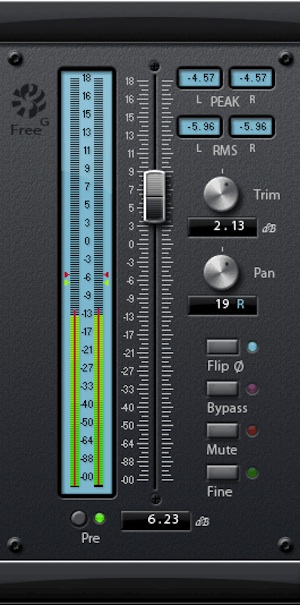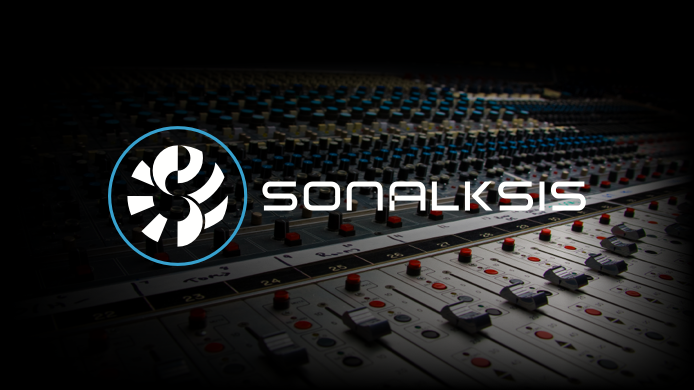Sonalksis Stereo Tools Vstm

Sonalksis Stereo Tools Vstm Service
. back. back. back.
back. back.Thomann is the largest online and mail order retailer for musical instruments, light and sound equipment worldwide, having about 10m customers in 120 countries and 80,000 products on offer. We are musicians ourselves and share your passion for making it.

As a company, we have a single objective: making you, our customer, happy.We have a wide variety of pages giving information and enabling you to contact us before and after your purchase. Alternatively, please feel free to use our accounts on social media such as Facebook or Twitter to get in touch.Most members of our service staff are musicians themselves, which puts them in the perfect position to help you with everything from your choice of instruments to maintenance and repair issues.Our expert departments and workshops allow us to offer you professional advice and rapid maintenance and repair services.
This also affects the price - to our customers' benefit, of course.Apart from the shop, you can discover a wide variety of additional things - forums, apps, blogs, and much more. Always with customised added value for musicians.
By Sam InglisWith their EQ and dynamics plug–ins, Sonalksis aim to harness the flexibility of digital to the sound quality of high–end analogue gear.The spectrum analyser is a neat addition to the SV517 equaliser.It’s one of the most frequently asked questions these days: when there are so many freeware effects and processors out there, why should we pay hundreds of pounds to get our hands on so–called ‘professional’ plug–ins from established manufacturers? You might just as well ask why we should buy CDs from the major labels, when there are a million Myspace pages out there where we can download music by independent or unsigned artists. And in both cases, there are people who are very happy to trade slickness and professionalism for the rawness and unorthodoxy of the amateur approach. Equally, though, there are many producers and engineers who need reliable, dependable and flexible processors that work properly and sound good, and who are willing to pay for those qualities.In many ways, Sonalksis epitomise all that is good about professional plug–in manufacture. The Liverpool–based company can boast a wealth of experience in the development of processing tools, both in hardware and software, and they seem very much in tune with the needs of their professional users. Two years ago, in SOS July 2005, we looked at their original SV517 plug–in equaliser.
This has since been overhauled in response to user feedback, and joined by a compressor and an expander/gate to form the Sonalksis Essentials bundle.I’ll concentrate on the dynamics processors in this review, since they haven’t previously been covered in Sound On Sound, but it’s worth reiterating that SV517 is still a very fine equaliser, and the new version 2 incorporates some worthwhile improvements. The most notable of these is an integrated spectrum analyser, which can be switched to show the pre– or post–EQ signal. Purists may frown, but I do find it helpful to be able to visualise the effects of my EQ settings!There’s also an extra EQ band, a new 18dB-per-octave filter shelving option, better metering, and a new ‘resonant shelf’ filter type. Like the other ingredients of the Essentials bundle, SV517 also now supports the RTAS plug–in format, and there are various user–interface enhancements which make it easier to set up — I particularly like the option to make the rotary controls respond in a linear, fader–like fashion to mouse movement.
All these modifications contribute to making SV517 MkII an even better equaliser than its predecessor, and it still retains the same effortless, rounded quality, which is remarkably free from harshness or phasey artifacts. However, the fly in the ointment as far as my PC is concerned is that although the spectrum analyser works fine, the actual graphic display of the EQ curve itself appears to be broken! I’m not quite sure what the problem is, since the original SV517 still works perfectly on my machine.One of the major selling points of Sonalksis’s entire range is that their plug–ins are closely modelled after the behaviour of analogue units. You’d expect a development team that has worked at AMS Neve to know a thing or two about quality analogue gear (they seem to have got the Neve tendency to give products obscure numbers instead of names down pat, too), and their SV315 MkII compressor is a revelation. Put it across the stereo outputs on a typical rock or pop mix, and you may find yourself thinking ‘Ah, so that’s how people get their mixes to sound like that!’SV315 can be triggered by an external side–chain input even in VST hosts such as Cubase.Although it’s more versatile than any hardware unit, its design appears to owe a little to the classic Alan Smart/SSL bus compressor, and in a mastering context its greatest weapon is the Crush control. Truly an iron hand in a velvet glove, the Crush dial allows you to apply serious amounts of gain reduction on complex programme material, while retaining a sound that is smooth to the point of silkiness.
Crush, along with a second parameter called Hold, alters the way the level–detection algorithm responds to transients in the input signal. These two parameters are further linked to a fully variable Knee control, which, as you’d expect, makes the compression kick in more or less suddenly as the signal level exceeds the threshold. There’s a neat ‘anti–breathe’ feature, which slows down the compressor release when recovering from a gap in an otherwise loud signal, so as to avoid clicky attacks after pauses in vocal lines and so on. There’s also a separate limiter stage — which, according to Sonalksis, operates entirely independently of the compressor’s detection algorithm.Add other goodies, such as switchable automatic or manual release time and gain make–up controls, a choice of four side–chain filter curves and the option to use an external side–chain signal, and you have one of the most flexible compressors around. You can even use SV315 with an external side–chain input in Cubase and other VST hosts that don’t support side–chaining in the mixer, provided they offer multi-channel surround bussing. It would be nice if the process of setting this up in specific applications was documented, though, because it took me quite a lot of mucking about to get it working in Cubase. For the record, it turns out you need to insert SV315 on a 5.1 Group channel, create mono Child Buses for that channel, and send the key signal to the Left Surround Child Bus.The Duck mode in SV719 is a very welcome addition to the usual Gate and Expand options.As you can probably tell, I am very impressed with SV315.
It’s one of those plug–ins that sounds so good you almost feel guilty about using it for mundane things like backing vocals or rhythm guitars! Wherever you use it, it seems to deliver the goods, from providing that in–your–face–yet–utterly–smooth ‘produced’ vocal sound, to adding substance to strummed acoustic guitar, through parallel compression on drum overheads, to making an entire mix sound punchy and loud. Unlike many ‘character’ plug–ins, I’d be happy to use it on every track in the mix.If I can’t get quite so excited about the third element of the bundle, the SV719 noise gate, that’s because it’s a noise gate. But as noise gates go, this one is pretty neat.
To my mind, a lot of the more utilitarian functions of noise gates — such as, er, gating noise — are easier to deal with in DAWs, using automation or editing, than with a plug–in, but there are plenty of more creative applications where products like SV719 can come in handy.It offers all the features you’d expect from a well–specified analogue noise gate, including side–chain filtering with a side–chain Listen function, and Hold and Hysteresis controls, as well as the basic Threshold, Attack, Release and Range dials. SV719 can be triggered by MIDI data as well as audio, and three different modes of operation are available: gating, expansion and ducking. The last is particularly welcome, although I found it quite fiddly to set up in situations where I just wanted to duck the signal by a couple of dBs.
It would be helpful if the Range control could be set to a finer scale in Duck mode; as it is, most of its 80dB range is likely to remain unused.In other ways, though, I have no complaints about SV719. It’s intuitive in operation, and with minimal juggling of the Hysteresis and Hold controls, you can almost always arrive at a stable configuration which lets through only the sound you want, with no chattering or other side–effects. The sophisticated MIDI options make it straightforward to set up all those stuttering gated-pad effects, and it has the same side–chaining options as SV315, so Cubase users can now gate their bass guitars from their kick drums in time–honoured fashion.There was a time when high–class processing plug–ins inspired by high–end analogue gear were mainly the province of Pro Tools TDM systems. However, in the last few years we’ve seen excellent native–format bundles from the likes of URS, McDSP and Sonnox, not to mention the perennial contenders from Waves.
It seems clear that there is a user base that is willing to pay for quality EQ and dynamics plug–ins that get the basics right, and that user base will be thrilled with Sonalksis’s Essentials bundle. All contents copyright © SOS Publications Group and/or its licensors, 1985-2020. All rights reserved.The contents of this article are subject to worldwide copyright protection and reproduction in whole or part, whether mechanical or electronic, is expressly forbidden without the prior written consent of the Publishers. Great care has been taken to ensure accuracy in the preparation of this article but neither Sound On Sound Limited nor the publishers can be held responsible for its contents. The views expressed are those of the contributors and not necessarily those of the publishers.Web site designed & maintained by PB Associates & SOS.